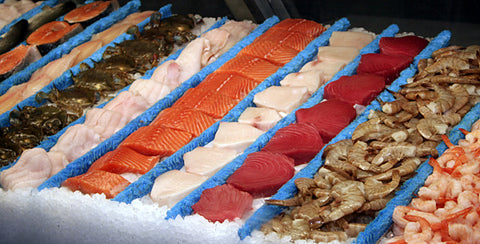 Reading the labels on food can sometimes be a daunting task, but the challenge of finding out what is actually in your food is made all the more alarming by the ingredients that can be in your food, but not on the label. Even healthy foods like olive oil, which contains healthy fats and antioxidants, can be mixed with other ingredients like canola oil or soybean oil in a blend but are actually labeled as 100% pure extra virgin olive oil. In fact, according to the New York Times, recent studies have shown that 69% of imported olive oil labeled “extra virgin” did not meet the standards for that label.
Reading the labels on food can sometimes be a daunting task, but the challenge of finding out what is actually in your food is made all the more alarming by the ingredients that can be in your food, but not on the label. Even healthy foods like olive oil, which contains healthy fats and antioxidants, can be mixed with other ingredients like canola oil or soybean oil in a blend but are actually labeled as 100% pure extra virgin olive oil. In fact, according to the New York Times, recent studies have shown that 69% of imported olive oil labeled “extra virgin” did not meet the standards for that label.
In fact, many of the olives in the olive oils sold in stores are not grown in Italy as suggested by the label. Instead, they are grown in countries like Morocco and Tunisia, taken to the mills days or months after being picked, and then processed into oils. From there, they are taken to Italy, where they are packaged and shipped. It is in this process that some producers mix the olive oil with soybean oil, or mix other vegetable oils with beta carotene and chlorophyll to produce a fake olive oil that is much cheaper to produce than one made with actual olives.
These deceptive labeling practices, however, are not limited to the olive oil industry. Recent studies have raised concerns with mislabeled seafood being sold in the United States, especially in the Southern California region. According to Oceana, a non-profit ocean conservation group, “in one of the largest seafood fraud investigations in the world to date, DNA testing confirmed that one-third, or 33 percent, of the 1,215 fish samples collected by Oceana from 674 retail outlets in 21 states were mislabeled, according to U.S. Food and Drug Administration (FDA) guidelines.” This study was a follow-up on an earlier report that showed 39% of New York City restaurants and retail sellers had committed fraud. Meanwhile, the rate of fake fish in Los Angeles was shockingly high at 55%.

For those trying to avoid red meat and other unhealthier meats, seafood is a good alternative. But with the dangers raised by the possibility of fake fish coming from faraway places with little to no oversight, even this healthy habit can be hard to maintain despite the best intentions. Among the concerns exposed by the study were the findings that only 7 out of 120 (6%) red snapper samples collected nationwide were actually red snapper and that more than half (59%) of the 46 fish types tested had been mislabeled.
With this information in mind, it’s always a safer choice to look for food that has been locally-sourced and clearly labeled. While it’s surely impossible to avoid all unhealthy foods, making sure that the food you do eat comes from a reputable, preferably local, source with a known producer is vital to ensuring a safe and healthy diet!




